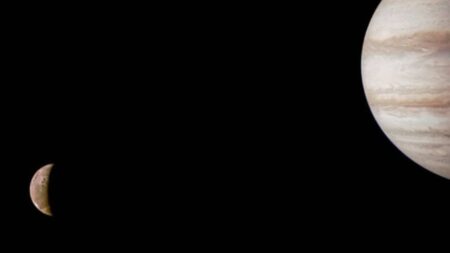NASA’s Volatiles Investigating Polar Exploration Rover (VIPER) mission, which was scheduled to examine the ice on the lunar surface and other possible resources by 2024, has been postponed.
NASA has proposed that the delivery of the VIPER (Volatiles Investigating Polar Exploration Rover) to the Moon’s South Pole be pushed back from November 2024 to November 2024.
VIPER is a rover that will return data that will assist in deciding how future human space exploration missions may harvest the Moon’s resources. These measurements will give insight into the genesis and distribution of water on the Moon.

NASA’s Commercial Lunar Payload Services (CLPS) program enables the acquisition of lunar delivery services from American companies for payloads destined for the moon that advance science, exploration, or commercial development capabilities.
This program includes “Commercial Lunar Payload Exploration and Retrieval,” which is an acronym for “Commercial Lunar Payload Exploration and Retrieval.”
NASA awarded a contract to Astrobotic, located in Pittsburgh, to transport the VIPER rover to the surface of the moon using the Griffin lander, manufactured by the firm.
As part of its request to Astrobotic for extra ground testing of the Griffin lunar lander, which is slated to bring VIPER to the surface of the Moon, NASA made the choice to pursue a 2024 delivery date.
This decision was part of the request for additional ground testing. The space agency wants the extra testing in order to reduce the total risk that is associated with the delivery of VIPER.
In order for Astrobiotics to finish the extra tests that have been ordered, the company’s contract with CLPS, which now has a total value of 320.4 million dollars, has been increased by 67.8 million dollars.
Through the Commercial Lunar Payload Services (CLPS) program, NASA has challenged U.S. corporations to accomplish a very difficult technical feat: to successfully land and operate on the Moon.
“We’ve implemented enhanced lander testing for this particular CLPS surface delivery,” said Joel Kearns, deputy associate administrator for exploration in NASA’s Science Mission Directorate, in a press statement. VIPER is the largest and most sophisticated science payload that NASA will deliver to the Moon through CLPS.
The Compact Lunar Prospecting System (CLPS) is an essential component of NASA’s Artemis missions to the Moon. Payloads consisting of science and technology that are delivered to the surface of the moon will contribute to missions both on and around the moon.
So far, the space agency has granted seven task order awards to CLPS suppliers in preparation for lunar deliveries in the early 2020s. Additional delivery awards are anticipated to take place until 2028.
An Overview of the VIPER mission
On the surface of the Moon, a rover in the shape of a box with four wheels and lights in front of it to illuminate the route ahead of it can be seen.

The Volatiles Investigating Polar Exploration Rover, or VIPER, as it was created by NASA, is shown by an artist. The location and concentration of ice and other resources near the South Pole of the Moon will be clearly visible to VIPER.
The establishment of a permanent presence on the Moon, which will enable future exploration of Mars and other planets in the solar system, will bring us a critical step closer to NASA’s ultimate aim.
Despite the fact that humans have been seeing the Moon for millennia from afar, it wasn’t until NASA’s Apollo 11 mission in 1969 that its soils could be thoroughly studied.
The Moon rocks that the astronauts brought back for lab testing were discovered to be completely dry, but we now know that those findings did not fully explain the presence of water on the Moon.
Science and Exploration on the VIPER Mission
A succession of orbiter and impactor missions, starting in the early 1990s, started to put together a more encouraging picture, leading to NASA’s 2009 finding that confirmed the existence of subsurface ice near the lunar South Pole.
It was picked up by VIPER. VIPER will directly investigate ice on the Moon’s surface and subsurface at various depths and temperature conditions within four key soil habitats as NASA’s first movable robotic mission to the Moon.
By using the information VIPER sends back to Earth, scientists can construct resource maps that show where and how much ice there is on the Moon, as well as what shapes it takes, such as ice crystals or molecules that are chemically bonded to other substances.
VIPER will help future landing sites under Artemis find ice on the Moon by finding places where water and other resources can be collected to support a long-term settlement.
Utilizing resources available on the Moon, such as water, might be a game-changer for human space travel to the Moon, Mars, and beyond because bringing everything we need from Earth for long-term exploration in space would be incredibly expensive.
VIPER Mission Partnerships.
The NASA Ames Research Center oversees the VIPER project.
VIPER will be carried to the Moon’s surface by SpaceX’s Falcon Heavy launch vehicle and Astrobotic’s Griffin lander.
Ames, the Kennedy Space Center in Florida, and NASA’s commercial partner Honeybee Robotics in Altadena, California, are providing the instruments, while NASA’s Johnson Space Center in Houston is designing and building the rover hardware. This mission will deliver scientific and technological payloads to and near the Moon.













